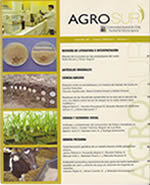Food Processing and Quality
Main Article Content
Abstract
Food processing cannot be perceived without considering the quality of the desired products. This involves the transformation of the raw material into food products of different categories (semi-finished or ready-to-eat products) using various techniques, from the simplest to the most sophisticated. The simplest techniques, such as sun-drying or direct heating have been used since ancient times with the primary goal to achieve long shelf-life or a tasty food with the quality characteristics of being innocuous and nutritious. Modern technology has maintained the same goals; however, the level of complexity and requirement have changed owing to a better understanding of processing methods. The development of technologies directly or indirectly related to food production has also led to quality improvement. Since the first experiment of Nicolás Appert in 1809 to sterilise food in a glass container, and the first tin container developed by Peter Durand in 1810, the canning industry has undergone an extraordinary transformation, from improvement of packaging materials to the introduction of high technology in process control, making use of information technology, as well as in the organisation of food production to process the raw material. Furthermore, emerging technologies ...

